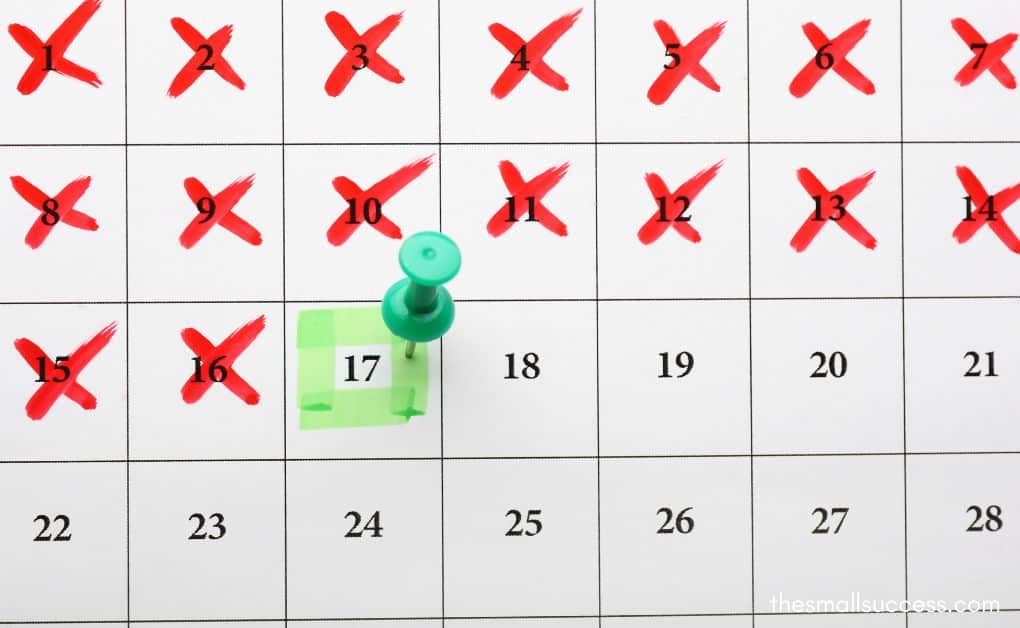What if one of the most effective productivity hacks came from a world-famous comedian, not a self-help guru?
Enter the Seinfeld Strategy, a simple but powerful approach to building consistent habits and long-term success. Made popular by Jerry Seinfeld, this method doesn’t rely on motivation or willpower. Instead, it turns your goals into a daily game of not breaking the chain — literally.
Whether you're trying to write every day, exercise more, or improve your focus, the Seinfeld Strategy might be the most effortless system to stick to it.
Let’s break it down.
What Is the Seinfeld Strategy?
The Seinfeld Strategy is based on a simple principle:
Do your task every day and mark it on a calendar. Don't break the chain.
Here’s the backstory.
When comedian Jerry Seinfeld was an up-and-comer, he set a goal to write one joke every single day. To stay on track, he used a big wall calendar and a red marker. Each day he wrote, he’d put a big red X on that day.
After a few days, he had a chain of X’s. The visual streak became satisfying — and powerful. He didn’t want to break the chain.
That’s it.
No deadlines. No pressure. Just a clear, visual cue to keep the momentum going.
Why the Seinfeld Strategy Works
This strategy taps into basic psychology and behavior design. Here's why it's so effective:
-
It Leverages Visual Motivation
A growing streak is motivating. Seeing a string of red Xs builds a sense of progress and pride. You don’t want to break the chain, even on tough days. -
It Emphasizes Consistency Over Intensity
You don’t have to do something big every day — you just have to show up. This removes pressure and encourages sustainable growth.Example: Write 50 words a day instead of 1,000 in one sitting.
-
It Creates Habitual Identity
When you keep the chain going, you're no longer someone trying to exercise, you become someone who works out every day.
This shift in identity reinforces the habit. -
It Minimizes Decision Fatigue
No more overthinking or debating when to act. The rule is simple: Do it today.
If it’s on the calendar, it happens.
How to Use the Seinfeld Strategy for Your Daily Habits
The beauty of this method is its simplicity. Here’s how to apply it:
Step 1: Choose One Core Habit
Start small. Pick one habit that matters to you:
- Write for 10 minutes a day
- Walk 5,000 steps
- Study one new vocabulary word
- Meditate for 5 minutes
Step 2: Get a Calendar (Physical or Digital)
Preferably one that shows the whole month. You can use:
- A large wall calendar
- A habit tracker app (like Habitica, Streaks, or Loop Habit Tracker)
- A bullet journal or planner
Step 3: Mark a Big X After Completing the Task
Only after you’ve completed the task. No cheating.
Let that red X be your reward.
Step 4: Keep the Chain Going
Once the chain starts, your job becomes simple: Don’t break it.
"Don’t break the chain" is more important than "do it perfectly."
Common Mistakes to Avoid
Even with a simple system, there are pitfalls. Watch out for:
- ❌ Picking Too Many Habits at Once
Start with one habit. Once that sticks, add more. - ❌ Going Too Big Too Fast
If your daily habit is too demanding, you’ll burn out.
Shrink it down to something too small to fail. - ❌ Skipping Recovery or Rest
Some habits (like workouts) may need rest days. In that case, track consistency, not activity. Mark rest days too — they’re part of the plan.
Seinfeld Strategy in Real Life: Examples
Writers
Authors like James Clear and Stephen King have daily writing routines. They build streaks, not just word counts.
Fitness
People doing daily walks or workouts use this to stay on track. Even 5 push-ups count — just don’t break the chain.
Learning
Language learners use apps like Duolingo, which literally show a streak counter. That’s the Seinfeld Strategy gamified.
Seinfeld Strategy vs Other Productivity Methods
| Strategy | Focus | Key Tool | Best For |
|---|---|---|---|
| Seinfeld Strategy | Consistency | Calendar / Habit Tracker | Daily habits |
| Time Blocking | Scheduling | Calendar blocks | Deep work sessions |
| Pomodoro Technique | Focus | Timer (25-min sessions) | Avoiding distraction |
| Ivy Lee Method | Prioritization | Daily task list | Planning key goals |
Want more on these?
Check out Ivy Lee Method Explained: Boost Focus and Get More Done
FAQ
Q: What if I miss a day — is the chain ruined?
A: No, it’s just a reset. Acknowledge it, forgive yourself, and start a new chain. The key is not letting one break turn into a downward spiral.
Q: Can I use it for multiple habits?
A: Eventually, yes. But start with one. Build the discipline before you scale it.
Q: Is this the same as habit stacking?
A: Not exactly. Habit stacking (from Atomic Habits) involves pairing a new habit with an existing one. The Seinfeld Strategy is about daily repetition and visual reinforcement.
Q: What tools can I use for digital tracking?
A: Great options include Streaks (iOS), Loop Habit Tracker (Android), and even Google Calendar or Notion.
Q: Does this strategy work for breaking bad habits?
A: It’s best for building positive habits. For breaking bad ones, consider pairing it with avoidance triggers and accountability tools.
Conclusion
The Seinfeld Strategy proves that you don’t need massive effort — just consistent action. By focusing on showing up every day and marking your progress, you create momentum that builds real, lasting change.
So grab a calendar. Pick one habit. Mark that first red X.
Then tomorrow?
Just

